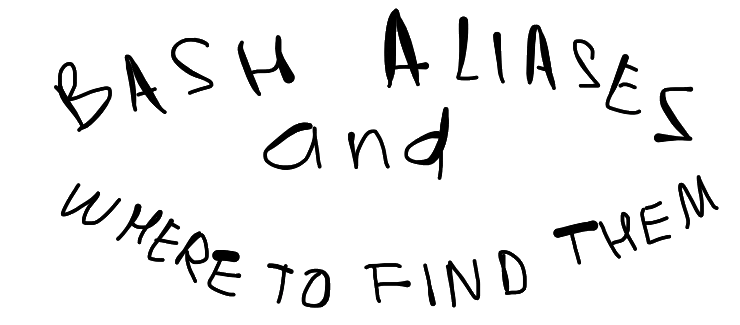Bash aliases and why I love them
I love bash. A tool as trivial as command line interface (CLI, or just console) holds so many secrets, that even after 9 years of experience I still sometime find something wonderful. But today I want to talk a bit about one of my favourite tricks -- aliases.

A little detour #
Before diving into the topic itself, I would like to brag a bit why I love shell and bash specifically.
The reasons behind this love are very simple, I would say. I used to work with from the very start of my career and through the years I learned about it's upsides and tricks a lot. For example, .rc files, which can help you preconfigure necessary application in the way you like. Or the fact that using several words (as a single command) you can find necessary information in giant text file or change one into something entirely new. And last, but not least, goes the availability of shell everywhere (I'm speaking right now about business applications, not your fancy macbook to watch facebook DIY videos, though even it has a console): baremetal servers, virtual machines, EC2 instances, even smallest Alpine containers!
Aliases and where they live #
Alias is a small word you replace the command with. For example, instead of docker inspect you can write di, or s instead of ssh. Nice, right? This is the magic of aliases.
In order to create one, you can use:
~/.profilefile~/.bashrcfile- or even separate file like I do:
~/.bash_aliases
In the example above ~/ is the home directory of your current user, same as /home/your-username. Declaration of an alias looks like this:
bashalias <new word for the command>="<command you want to replace with alias>"
And actual example:
bashalias l="ls -lh --color=always"
alias ll="ls -lah --color=always"
And that's it! If you're going to use non-default file for your aliases, don't forget to include it inside your shell profile:
bashif [ -f ~/.bash_aliases ]; then
. ~/.bash_aliases
fi
After inclusion of the aliases, don't forget to update your shell profile:
bashsource ~/.bashrc
# or
source ~/.profile
For the time I write this article I have 40 aliases for my day to day work. I've seen people's rcfiles with hundreds; a little overkill, if you ask me, but I'm not the one to judge: you choose what is appropriate for yourself.
I remember when working in VK as a systems administor, previous admins had particular sence of humor: trying to run nano you were actually calling an alias for vim. And trying to open file with vim you saw a message threatening to do something with your balls. Ah, good ol' times.
Epilogue #
You can peek at my aliases (and all the dotfiles I use, actually) at my GitHub:
Closing remarks
As always, feel free to disagree with me, correct my mistakes and befriend me on one of the social media platforms listed below.
During the process of writing this post, the following music compositions have been listened to:
2005 - 2010 Hardstyle Mix.